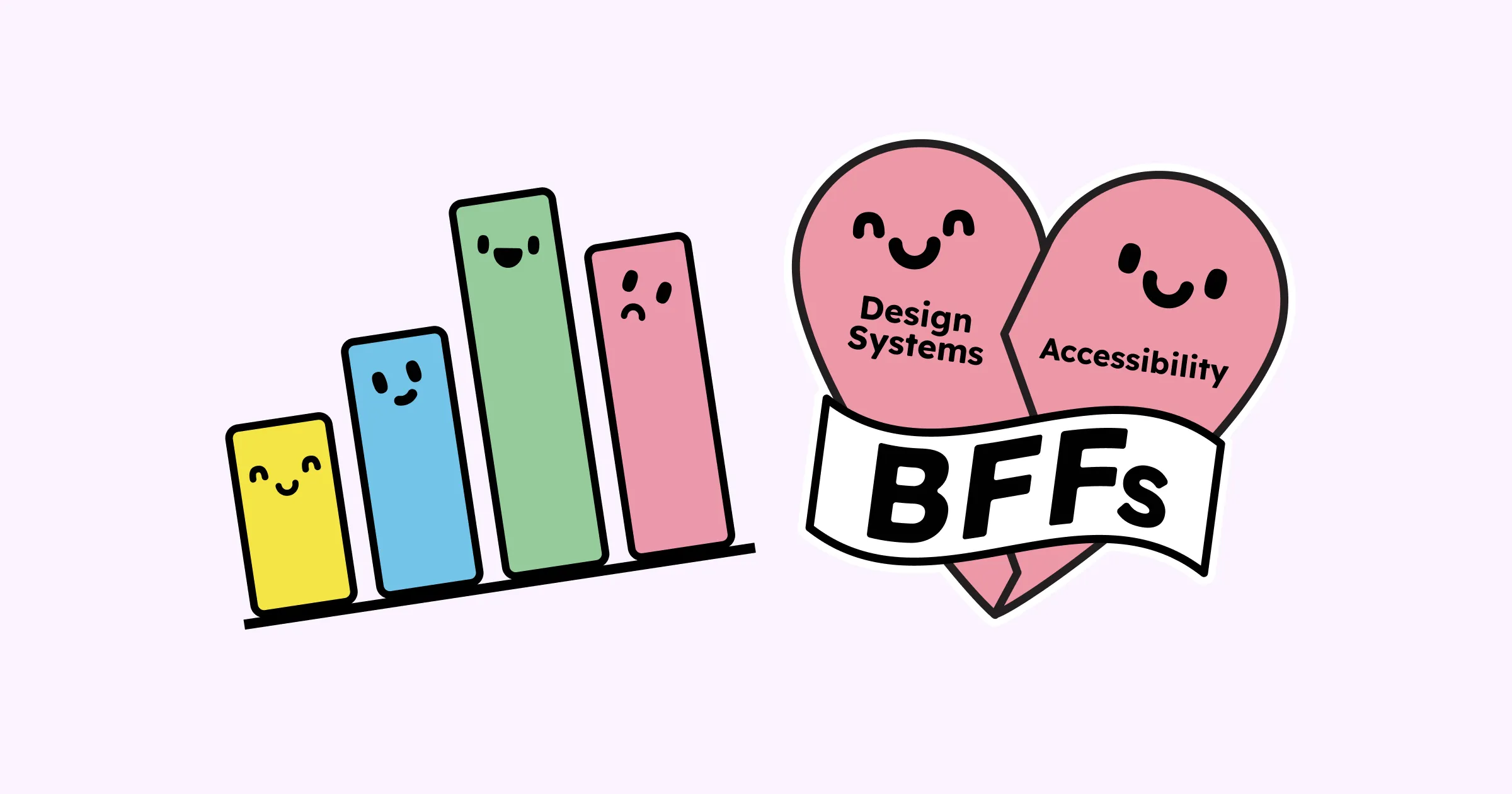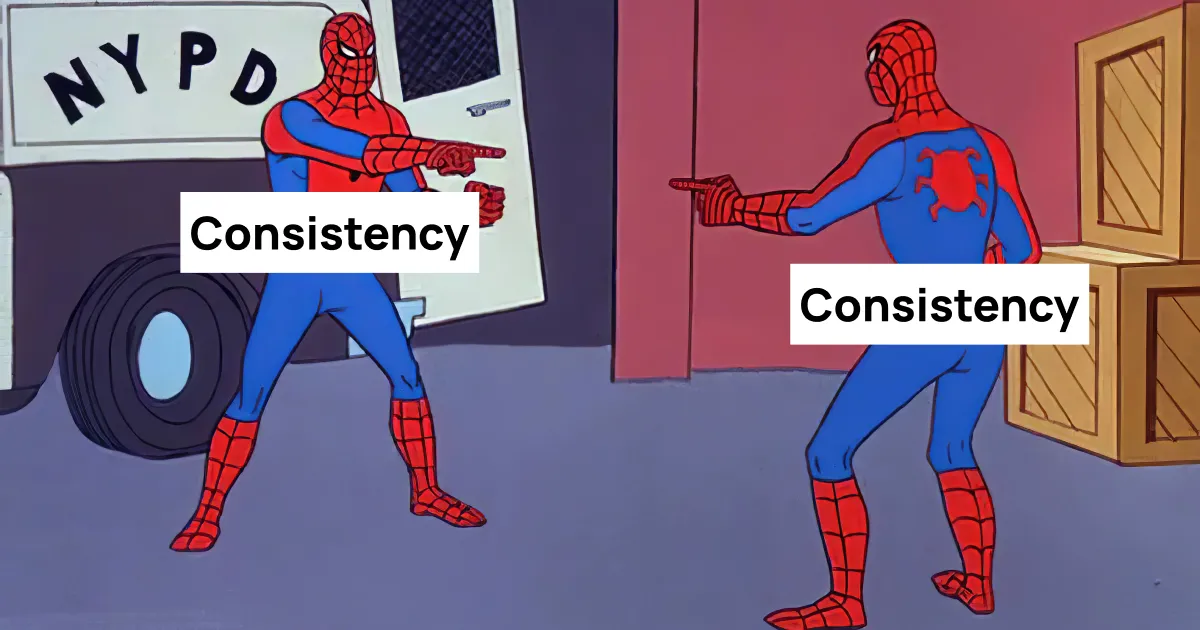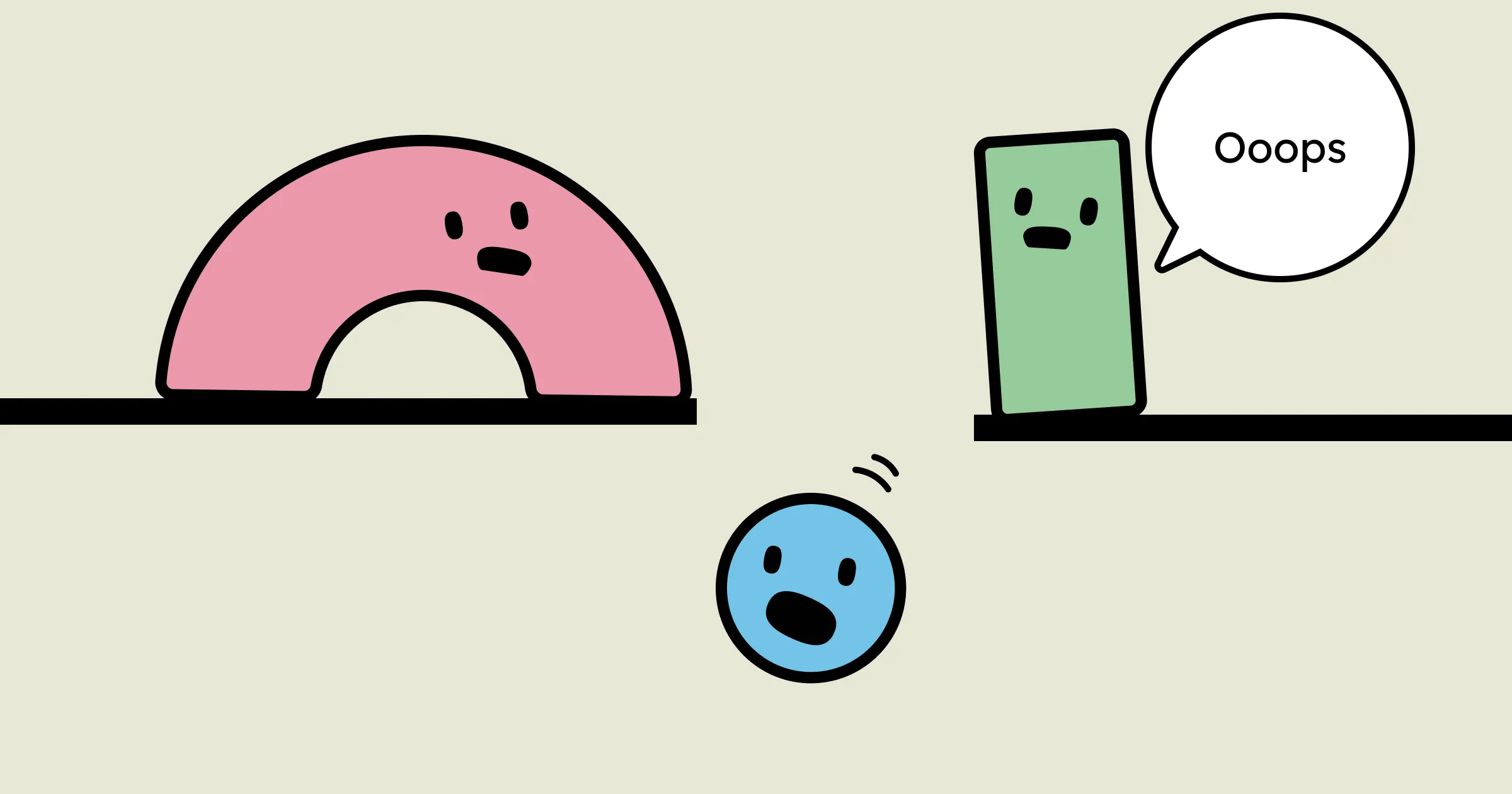Accessibility teams and design system teams are both often asked to prove their value with hard numbers. Leadership wants to see measurable impact through faster delivery, fewer defects, improved user experience, and cost savings. Both teams are usually tracking metrics that speak to those outcomes.
They may not always realize it, but both teams are working toward the same goals such as driving quality at scale, more consistent experiences, less rework, and organizational awareness. But too often, their efforts are disconnected. Instead of building a shared ROI (return on investment) story, each team ends up advocating alone.
So here’s a question to ask yourself:
- If you work in accessibility, do you consider your design system team one of your strongest, and most active relationships?
- If you work on a design system, do you feel the same about your accessibility partners?
The answer should be yes. Because when these two teams work closely together, they unlock faster delivery, stronger outcomes, and a far more compelling case for business value.
The Bigger Picture
Design system and accessibility teams are being asked to do more with fewer resources.
Design system teams aren’t scaling as fast as the rest of the product organization. Demand is outpacing supply, and requests are often met with no or not yet.
2025 Design Systems Report, ZeroHeight
Some organizations are moving both teams under a shared “foundations” group. Others are placing them within infrastructure. After the great layoffs of 2024, many of these teams now report to the same leader.
However, no matter how the organization is structured, both teams are being held to the same expectation: prove your return on investment.
And proving ROI isn’t easy.

Some teams find it easier to win early buy-in with vision and values alone, but later struggle to back those promises with metrics. Others can’t even get a seat at the table to make that initial case.
The Overlap We Keep Missing
From the many teams I’ve worked with, one pattern is clear, design systems and accessibility leaders are often so heads-down in their own advocacy efforts that they forget something important:
- These two teams serve parallel goals.
- They face similar roadblocks.
- They are fighting many of the same battles.
If they worked more closely, really partnered, they could tell better stories, create better artifacts, and build a stronger case for shared impact.
How Each Team Is Measured
Design System Team Metrics
- Adoption in design
- Adoption in code
- Product consistency
- Speed of development
- Speed of design delivery
- Contribution rate
- Number of components
- Documentation engagement
- Office hours attendance
- Team happiness
Accessibility Team Metrics
- Audit issue count
- Issue resolution speed
- Accessibility bugs per release
- Coverage of automated testing
- Manual testing frequency
- Story tickets with accessibility criteria
- Accessibility training completion rate
- Support tickets from users with disabilities
- Office hours attendance
- Team happiness
7 Ways Accessibility and Design Systems Amplify Each Other’s ROI
On there own, these metrics can be hard to translate into business value, especially to leadership who are not accessibility experts.
So what happens if we take it a step further and look for connections between them? What if we uncover trends that show how design system adoption reduces accessibility bugs, or how contribution rate influences manual testing coverage?
By aligning metrics and finding meaningful correlations, both teams can move beyond proving value in isolation, and start building a shared, compelling ROI story.
Reduced design rework costs
Correlated metrics: Adoption in design & Design accessibility bugs per release
Teams that consistently use accessible design components experience fewer accessibility defects, significantly cutting down on costly post-release design adjustments.
Lower engineering overhead and faster deployments
Correlated metrics: Adoption in code & Code accessibility bugs per release
Increasing adoption of standardized, accessible code components directly reduces accessibility defects, enabling quicker releases and saving valuable engineering resources.
Reduced internal training expenses
Correlated metrics: Documentation engagement & Accessibility training completion rates
Clear and accessible documentation reduces the need for formal accessibility training, enabling teams to efficiently scale their accessibility knowledge internally.
Accelerated product delivery timelines
Correlated metrics: Time taken for product teams to design/develop & Accessibility annotations kit usage
Teams that integrate accessibility annotations earlier experience fewer delays from late-stage accessibility fixes, resulting in faster overall product delivery.
Increased interface consistency across products
Correlated metrics: Component adoption & 3.2.4: Consistent Identification defects
Higher component adoption directly reduces interface inconsistencies, creating clearer user experiences, reducing user confusion, and strengthening alignment across product teams.
Improved strategic prioritization of investments
Correlated metrics: Release notes & Feedback from users with disabilities
Are you consistently leveraging insights from users with disabilities to inform your roadmap? Closing the feedback loop by clearly demonstrating how system updates enhance accessibility ensures strategic alignment and impactful product investments.
Increased cross-team productivity and proactive issue prevention
Correlated metrics: Support requests across teamsIf both Accessibility and Design System teams host office hours or support channels, are the attendees overlapping or distinct? Noticing increased cross-awareness between these groups can highlight improved collaboration, proactive issue solving, and reduced duplicated effort.
The Bigger Win: Your 2025 Challenge

These metrics aren’t just performance checks. They’re how you tell a story that leadership will understand, one that connects team effort to business outcomes.
When accessibility and design system teams align around shared metrics, they unlock more than operational efficiency. They build a strategy for scale. Together, they can make a stronger case for:
- Funding
- Headcount
- Influence
- Visibility
- Long-term trust
Accessibility teams show their impact on quality, risk, and user experience. Design systems demonstrate value through speed, consistency, and reduced cost. Alone, those stories are good. Together, they’re undeniable.
Because alignment isn’t just how we work better together. It’s how we make the case for everything that comes next.
So here’s your challenge for 2025: Make this the strongest partnership in your organization. And if it already is? Make it impossible to ignore.
If your design system promises accessibility, we’ll help you prove it and build it.
Mantis & Co. works with teams to embed accessibility into the foundations of their systems, meeting compliance requirements and making real, lasting change. Whether you need strategy, support, or sleeves-rolled-up execution, we’re here to help.
If something in this guide sparked an idea or a question, let’s connect. Email hello@mantisandco.com to get started!




